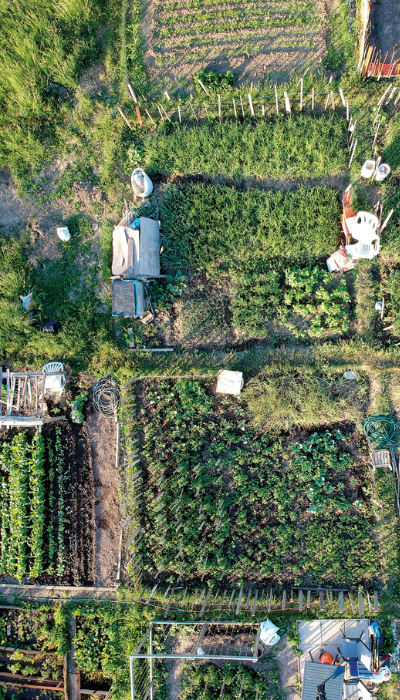WHAT IS PERMACULTURE?
Care of the Earth • Care of the People • Return and Sharing of Surplus

What is Permaculture? By Marco Chung-Shu Lam
Permaculture is an ethically driven design system that is based on observing the intelligence and elegance of nature. It asks the fundamental question of what does a society look like and how does it operate if it sought a regenerative relationship with nature in which the ecology thrived rather than collapsed over time. In many ways, it is the fundamental question that any aware human being should be asking.
When we ask that question, we need to look at systems that provide our everyday needs with greater care. These include but are not limited to: food, energy, shelter, livelihood, health care, community and mobility. What is permaculture evolves over time as we both learn from the indigenous wisdom of skilled land stewards and incorporate the increasing complexity of scientific discoveries.
Despite the breadth and complexity of what is permaculture, the practice of it should be beautiful and nourishing. Eating food from your garden, making medicine from the plants that grow in your biome, gathering with community over art and other things that matter, planting fruit trees and riding your bicycle, building soil and tending chickens and bees seem to be common paths that many permaculturists end up finding the most sense in creating a lower carbon footprint and a better possible ecology for their descendants to live in.

Permaculture Principles: Work with nature, rather than against the natural elements, forces, pressures, processes, agencies, and evolutions, so that we assist rather than impede natural developments. The problem is the solution; everything works both ways. It is only how we see things that makes them advantageous or not (if the wind blows cold, let us use its strength and its coolness to advantage). A corollary of this principle is that everything is a positive resource; it is just up to us to work out how we may use it as such.
-Site Analysis and Inventory
-Mapping
-Designing with zones and sectors
-Sheet Mulching
-Swales
-Chickens Tractors
-Edible Food Forest
-Plant Guilds
-Native Plants
-Small Scale Intensive
-Herb Spirals
-Greywater systems
Benefits of well-developed permaculture projects include:
-Conserving and building healthy soils, the basis of food systems.
-Diversifying and greatly increasing local food production (typically from a few sources to dozens, even hundreds), which increases the nutritional quality and pleasure of local diets and buffers against market fluctuations in food prices.
-Eliminating use of toxic chemicals that cause a variety of health problems from immediate toxic poisonings to longer-term chronic problems like cancer, birth defects and the destruction of healthy natural food source (i.e. toxic fish).
-Maximizing efficient beneficial use of local water sources, the critical lifeblood for people.
-Practically eliminating pollution of water by human wastes, thereby dramatically reducing toxins.
-Creating clean drinking water sources, further reducing disease.
-Increasing tree crops, which retain soils, slow water runoff, increase groundwater storage, and provide cooling shade.
-Increasing the beauty of the community though the creation of diverse life forms – flowers, insects, birds, frogs, and hundreds of others that create a pleasant and inspiring atmosphere for people.
-Harnessing natural renewable energies to create comfortable home living conditions.
